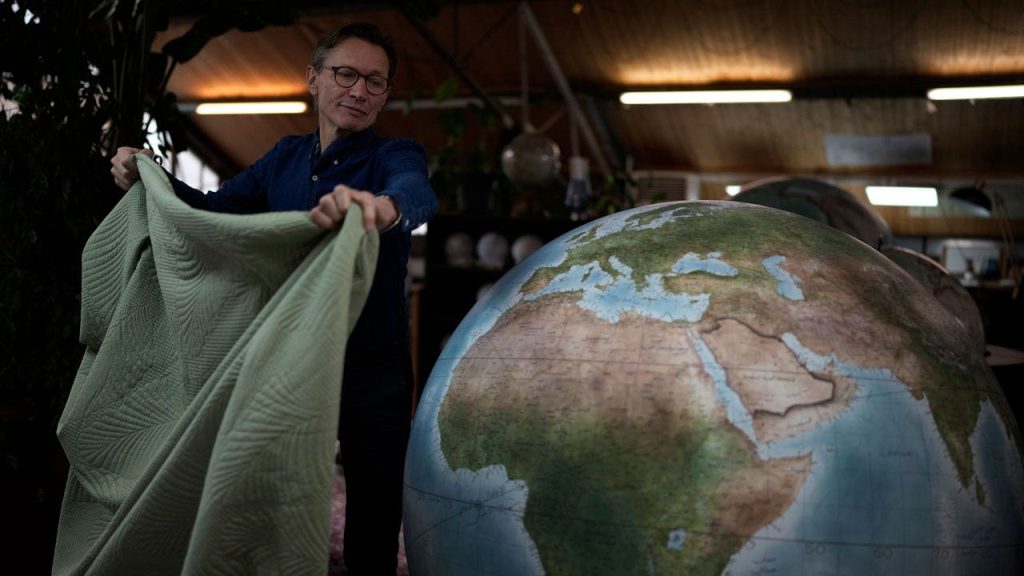In the age of advanced technology, there is something timeless about a globe. Globemaking, an art that has been around since antiquity, still thrives today. London globemaker Peter Bellerby, who founded his company in 2008, believes that people have a yearning to understand their place in the cosmos, which helps keep globes relevant. Despite the availability of digital tools like Google Earth, a physical globe can connect individuals to the planet in ways that technology cannot.
Creating a globe involves a complex process. Bellerby’s globes are meticulously crafted, with prices ranging from $1,900 to six figures. The globes are made by constructing a sphere and carefully applying petal-shaped panels called “gores,” which are then painted with intricate details. From constellations to landscapes, the imagery on the globes varies widely. While globes are considered works of art and historical artifacts, their accuracy is limited due to the Earth’s ever-changing nature.
Globes are purchased by a diverse range of individuals, from families to businesses, heads of state, and private collectors. They are used as display pieces and are known to feature in movies and at museums. However, globemaking is not without its challenges, as political sensitivities can affect how countries are depicted on the globe. Disputed borders and territories are considered a “political minefield,” and failing to accurately represent them could result in customs issues.
The history of globes dates back centuries, with the oldest known surviving terrestrial globe from 1492 known as the “Erdapfel” or “earth apple.” Made by German navigator Martin Behaim, this globe contained more than just geographical information but also details about commodities, marketplaces, and trading protocols. Despite its historical significance, the globe also represents a time of conquest and slavery, as Europeans sought to exploit resources and establish dominance over other parts of the world.
During World War II, twin globes were commissioned for American President Franklin Roosevelt and British Prime Minister Winston Churchill as symbols of power and partnership. These globes were massive and meticulously crafted, highlighting the importance of globes in shaping international relations and strategies. Today, these globes are housed in museums, serving as reminders of a time when globes played a crucial role in shaping the world’s direction.
While the use of globes may be declining, particularly in educational settings where digital tools are becoming more prevalent, the allure of a physical globe remains strong. Whether as a symbol of prestige, a historical artifact, or a work of art, globes continue to captivate people with their three-dimensional representation of our planet. As technology continues to advance, globemaking will likely continue to adapt to modern challenges and find new ways to appeal to a diverse audience of globe enthusiasts.


